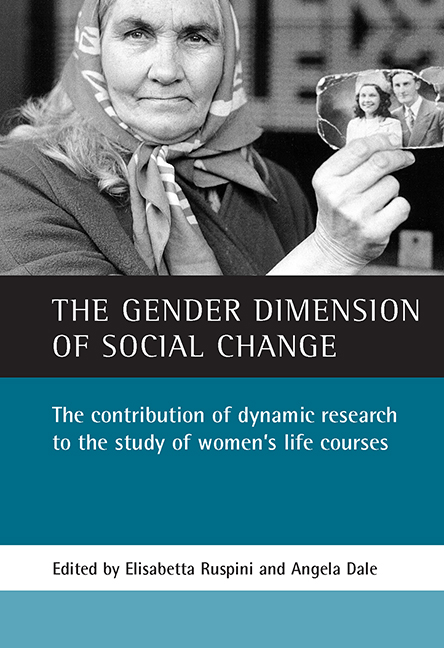 The Gender Dimension of Social Change
The Gender Dimension of Social Change eight - Women and self-employment: the case of television production workers in Britain
Published online by Cambridge University Press: 20 January 2022
Summary
Introduction
Massive changes have occurred in the contractual status of the British television industry’s workforce since the early 1980s. Estimates in the early 1990s (Holly and Woolf, 1995) suggested that 60% of the workforce were self-employed freelance or self-employed owners of small independent production companies. In the 1970s, however, staff were mainly tenured, working in the few large vertically integrated broadcasters.
There has been a large growth in self-employment in Britain since the 1970s. Both women and men have seen an increase in this type of contractual working arrangement, although men to a greater extent than women. There are relatively few studies of the working experiences of the self-employed and even fewer that examine the gender dimension, although women’s representation in the television industry has increased over time. The industry provides an interesting context, therefore, from which to view the experience of self-employment and examine gender inequality in the self-employed workforce. One serious problem faced by the self-employed is maintaining employment continuity, an inherently longitudinal concept. Employment continuity is essential to fulfilling regular financial commitments in life, and it underpins the structure and stability of other relationships.
This chapter offers new insights into gender inequality over time as it is reflected in this growing form of employment status in the British economy. It also examines the in- and out-of-work experiences of self-employed workers in the television production industry in Britain in the 1990s. The data are provided by a Television Industry Tracking Study (ITS), initiated by the British Film Institute (British Film Industry, 1995, 1997, 1999), and are discussed later in this chapter. It is important to go beyond cross-sections in mapping inequalities in gender relations, and this chapter examines some of the dynamic elements of employment experiences. The longitudinal nature of these data allows us to examine the problem of maintaining continuity in respondents’ employment contracts.
In the rest of this chapter, we summarise the research on self-employment based mainly on cross-sectional data. We then present further details concerning the context of the changing structure of the television industry. We answer the question ‘Why do we need longitudinal data?’ The available panel data are then described, and the methods selected for modelling employment continuity.
- Type
- Chapter
- Information
- The Gender Dimension of Social ChangeThe Contribution of Dynamic Research to the Study of Women's Life Courses, pp. 159 - 188Publisher: Bristol University PressPrint publication year: 2002


